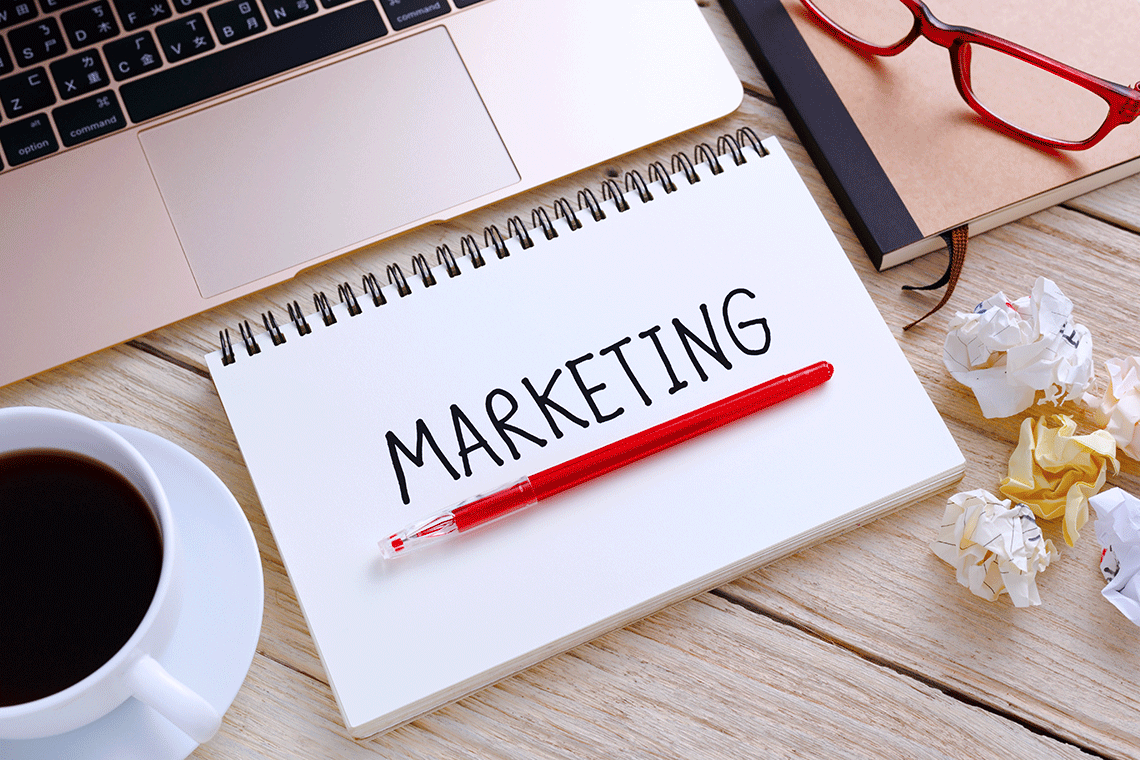Solving the Most Frustrating Part of Marketing as a Process for Small Business
When I founded Indispensable Marketing I spent most of my time telling any small business owner that would listen that this may be hard for you to come to grips with but “marketing is a process, not an event.”
It can be compared to breathing. You can’t live very long from a single breath. It takes many breathes, one right after another. Marketing is the same. You will not attract, obtain, and keep customers with one marketing action. You keep breathing to stay alive. You keep marketing to generate leads, make the phone ring, cause people to ask for your product/service, visit with you, request for more information or try a test run.
To understand how to approach marketing as a process for your business, it may be helpful to understand my definition of marketing: Marketing is getting someone who has a need to first become aware of you and then trust you enough to buy.
Now to gain this awareness, earn this trust and be considered during the purchase you need a process approach to marketing.
Below you’ll find the marketing process that addresses today’s marketing and sales challenges for small businesses. I’m unlocking these 7 secrets from the hidden and behind-the-scenes discussions I’ve had with businesses owners and CEOs over the years.
1) Start with Strategy
Strategy and tactics are both important to your marketing success. But there is a priority to them. Strategy development and conversations always come first. If you develop a clear strategy, you will attract the right tactics. If you don’t have a clear strategy, no tactic will save you.
The way you start with strategy is to decide who matters and what matters. You must spend time narrowly defining your ideal clients and finding some unique proposition that these ideal clients value before proposing any tactics aimed at lifting sales.
2) Know where your customers are going
The next step involves The Customer Journey. This intentional process asks you to view your business in 5 stages and discover how you will move your prospects from awareness of your business/solution, to educating them on the benefits/problems you solve, sampling your expertise/solution, purchasing your core offering, and referring others to your business.
Nothing matters more to a business than how they make customers feel during their experience with the brand. How the customer feels determines whether your business survives or sinks. The secret to organic growth is great customer experiences, not the marketing done in the pages of a magazine, newspaper, trade publication, on TV, social media post or other media outlets.
3) Become a media company
In almost every industry today you are first a media company, then whatever your core expertise is. Media company/Accounting firm, media company/repair service, media company/HVAC services, media company/construction contractor.
Every element of marketing today relies on some form of content to create awareness, educate customers, create sample engagements, improve the purchase experience, and generate referrals properly. In this step business owners must commit to creating content much like a publisher might. Not just any content though, you need to create content that works as marketing – building know, like and trust, some even consider this the new branding.
The Internet has disrupted the traditional sales process, allowing the prospective customer or client to begin on their own terms via search and social media. This means savvy business owners must adapt to the information-empowered prospect in a fashion that more resembles courting than it does selling.
The best way to produce content that works as marketing is to have it focus on the problems and desires of prospects and customers. It’s all about delivering independent value with content before you attempt to make the sale.
4) Build online to offline engagement
The majority of today’s purchase decisions involved some amount of research online. Your business must be easily found online, easily engaged online, and easily communicated with online to facilitate offline engagements (calls, meetings, etc.) This requires a focus on:
- Content Marketing
- SEO
- Social Media participation
The smart way to approach this is to treat content marketing, social media and search engine results as aspects of a holistic strategy centered around content.
Ultimately, integration is what makes all this marketing work. Marketing is a one-two-three-four punch. In business, potential prospects are sent electronic and traditional communication, called for follow-ups, visited in-person and presented with digital, TV and radio ads. One ad, in a vacuum, is usually not enough to convert target audiences. Similarly, you should realize that no one tactic bests all the others. Tactics don’t compete with each other, they compliment each other.
Until you view your online and offline marketing as one integrated whole you’ll continue to fall prey to the shiny object syndrome.
5) Mix lead generation
Lead generation is essentially a game of finding the right mix. There is no one magic way to generate tons of leads.
One mistake some business owners make is to rely on one or two ways to generate leads. In many cases, there will be one of two ways that seem most effective.
Speaking, for example, is a great way to present your ideas and brand to willing prospects. But, to build a winning business you need to generate awareness and trust by appearing everywhere – integrating online and offline.
This means speaking, writing, advertising, PR, and referral generation. The impact of multifaceted lead generation is that it speeds the sales cycle dramatically and often removes proposals and price shopping.
A prospect that sees an ad reads an article and finds your quote on an industry news site can effectively sell themselves. If you rely on one form of awareness you may indeed get attention, but the education process will be much greater.
6) Walk leads down a roadmap
In the same way that your marketing process generates leads, you need to also take that same process approach when a prospect wants to learn more.
Have a well thought out roadmap that every new lead walks, a way to develop trust and rapport, and a proven process for orienting new clients. This can positively influence the results you experience.
7) Realize you’re never done
One of the little secrets of marketing is that it’s a process; it’s NOT an event. It’s a process that has the beginning and the middle, but if you’re going about it right, it does not have an ending. It is a never-ending process.
Every business owner essentially wants to know the one thing they can do to get massive results, the magic pill they can take, the one bit of advice from an expert that will turn the ship around.
Truth is, marketing is mostly a bunch of hard work, done consistently.
Once you build the various elements of your marketing process you must map it out on a calendar, test, analyze, tweak and improve it continuously.





